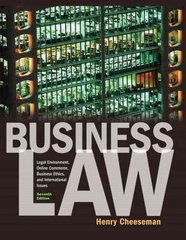Question
7. A monopoly firm, Alex Inc., can set price in the apple market with marginal cost of $5. The weekly market demand, consumer, and producer
7. A monopoly firm, Alex Inc., can set price in the apple market with marginal cost of $5. The weekly
market demand, consumer, and producer cost-benefit schedules are given in the table.
Demand
Schedule
Quantity 1 2 3 4 5 6 7 8
Market price $ 8 7.5 7 6.5 6 5.5 5 4.5
Consumer
(Biwei)
Marginal use
value
8 7.5 7 6.5 6 5.5 5 4.5
Total use value 8 15.5 22.5 29 35 40.5 45.5 50
Consumer
surplus
0
Producer
(Alex)
Total revenue 8 15 21 26 30 33 35 36
Marginal
revenue
8 7 6 5 4 3 2 1
Average cost 5 5 5 5 5 5 5 5
Total cost 5 10 15 20 25 30 35 40
Producer surplus 3
Market welfare 3
Note: all the numbers except the quantity demanded are in terms of dollars.
1) Suppose Biwei is the only consumer in the apple market, why is his marginal use value equal to
the apple price? Calculate his consumer surplus (net gain from consumption) and fill in the table.
How many apples he would like to buy per week?
2) As the only producer in the apple market, at what price, how many apples would Alex sell per
week in order to maximize his economic profit? Calculate his producer surplus.
3) Consider the society as a whole, calculate the total welfare (total use value minus total production
cost) and fill in the table. From the society's point of view, what is the optimal amount of apple
that shall be produced? What is the amount of deadweight loss arising from monopoly decision
compared with the social optimum?
4) To extract consumer surplus, the monopoly firm can charge differential prices on different
costumers along the demand schedule (e.g., coupon, student discount, VIP price) according to their
marginal use value. (Or, it can provide discounts for additional quantities purchased.) By adopting
these strategies, can Alex potentially remove the deadweight loss under monopoly? Explain.
5) Another strategy Alex can increase his economic profit is to set an all-or-nothing price lower than
the monopoly price. The all-or-nothing pricing strategy requires a consumer to buy all the apples
at a given price. If Alex sets the all-or-nothing price at $6.25, calculate the economic rent and
consumer surplus under all-or-nothing pricing for different quantities. What is the optimal all-or-
nothing quantity Alex should sell to maximize economic profit?
6) Is the all-or-nothing strategy more efficient than monopoly decision for the society? Explain.
Step by Step Solution
There are 3 Steps involved in it
Step: 1

Get Instant Access to Expert-Tailored Solutions
See step-by-step solutions with expert insights and AI powered tools for academic success
Step: 2

Step: 3

Ace Your Homework with AI
Get the answers you need in no time with our AI-driven, step-by-step assistance
Get Started


